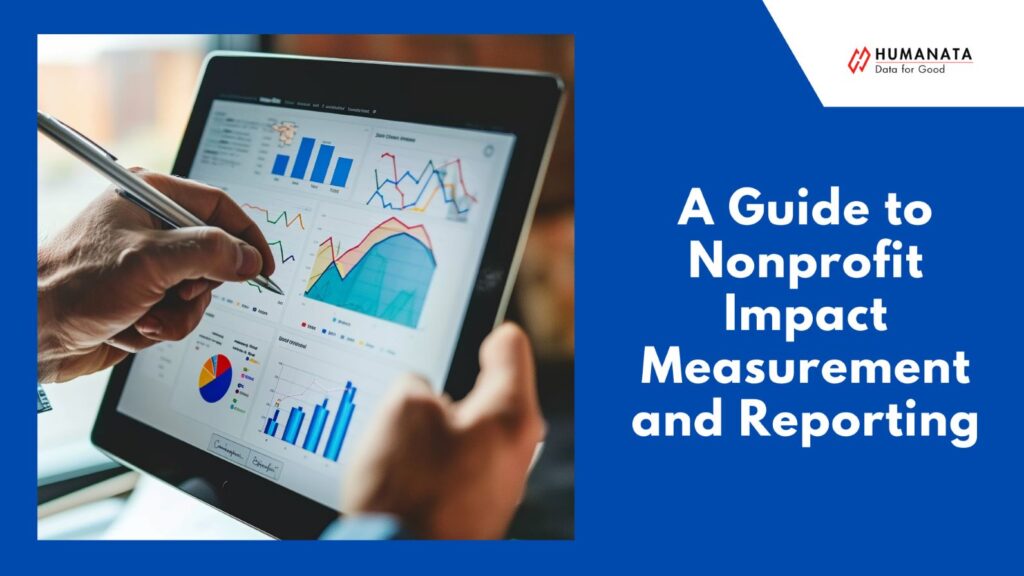
Nonprofits are often at the heart of communities, working tirelessly to address pressing social issues. Yet, quantifying the impact of their efforts can be a daunting task. This is where impact measurement and reporting come in.
By understanding how to measure what matters, nonprofits can demonstrate their value, attract support, and drive meaningful change.
Why Measure Nonprofit Impact?
Impact measurement and reporting is a critical practice for any nonprofit organization. Measuring nonprofit impact is not just about numbers; it’s about telling a compelling story.
By tracking outcomes and demonstrating progress, nonprofits can build trust with donors, stakeholders, and the community. This, in turn, can lead to increased support, expanded partnerships, and greater impact.
- Accountability: Demonstrating how funds are used to create positive change is crucial for building trust with donors and supporters.
- Learning and Improvement: By analyzing impact data, nonprofits can identify what works and what doesn’t, leading to program improvements and better outcomes.
- Resource Allocation: Impact measurement helps nonprofits allocate resources effectively, focusing on programs with the greatest impact.
- Advocacy: Sharing compelling impact stories can influence policy decisions and garner support for the cause.
What is a KPI for a Nonprofit Organization?
Key Performance Indicators (KPIs) are essential for measuring the success of a nonprofit organization. KPIs provide specific, quantifiable metrics that help track progress towards strategic goals. Some common KPIs for nonprofits include:
- Number of beneficiaries served
- Amount of funds raised
- Volunteer engagement and hours
- Program success rates
- Community impact metrics
Using Data to Measure Nonprofit Outcomes

Nonprofits today have access to a wealth of data that can be harnessed to measure outcomes effectively. But how can they turn raw data into meaningful insights? Here are some best practices for nonprofit impact reporting:
1. Define Clear Goals and Objectives
Start with a clear understanding of what you aim to achieve. Specific goals make it easier to identify relevant data points and KPIs. For instance, if a nonprofit’s mission is to improve literacy rates in a community, specific objectives might include increasing the number of children attending literacy programs or improving reading levels by a certain percentage.
2. Collect Relevant Data
Gather data that directly relates to your goals. This might include quantitative data (like test scores or attendance numbers) and qualitative data (like participant feedback and case studies). Utilize technology to streamline data collection and ensure accuracy.
3. Analyze and Interpret Data
Once you have your data, analyze it to uncover trends and insights. This might involve statistical analysis, data visualization, or even predictive modeling. The goal is to translate data into a clear narrative about your impact.
4. Share Your Findings
Communicate your results to stakeholders through engaging and transparent reporting. Use storytelling with impact data to make your findings relatable and compelling. Visual aids like charts, graphs, and infographics can help make complex data more accessible.
Storytelling with Impact Data

One of the most powerful ways to communicate nonprofit impact is through storytelling. By combining data with personal stories, nonprofits can create a compelling narrative that resonates with their audience. Consider the following approach:
- Introduce the Issue: Start with a real-life story that illustrates the problem your nonprofit addresses.
- Present the Data: Use data to show the scale of the issue and your organization’s efforts to tackle it.
- Showcase Outcomes: Highlight the positive changes resulting from your programs, supported by both qualitative and quantitative data.
- Call to Action: Encourage your audience to get involved, whether through donations, volunteering, or advocacy.
Best Practices for Nonprofit Impact Reporting
To ensure your impact reporting is effective, consider these best practices:
- Be Transparent: Clearly explain your methods, data sources, and any limitations.
- Be Consistent: Regularly update your stakeholders on progress and changes.
- Be Engaging: Use visuals, stories, and interactive elements to keep your audience interested.
- Be Honest: Acknowledge challenges and areas for improvement. Transparency builds trust.
Examples of Nonprofits Practicing Impact Measurement and Reporting
1. Charity: Water

Charity: Water is a nonprofit dedicated to providing clean drinking water to people in developing countries. They excel at impact measurement and reporting by using GPS tracking and real-time data to monitor the status of water projects. Their transparent reporting and use of technology have built a strong trust with donors.
2. DonorsChoose

DonorsChoose connects teachers with donors to fund classroom projects. They use detailed data and success stories to show the impact of donations. Each project funded comes with updates, photos, and thank-you notes from students, providing a tangible connection between donors and their impact.
3. The Bill & Melinda Gates Foundation

The Gates Foundation uses rigorous data analysis and reporting to measure the impact of their global health and development programs. Their annual reports and open data initiatives provide detailed insights into their work, challenges, and successes.
How to Measure Success of a Nonprofit Organization
Measuring success goes beyond tracking inputs and outputs; it’s about evaluating outcomes and impact. Here are some steps to effectively measure success:
- Set Clear Metrics: Define what success looks like for your organization.
- Collect Data Continuously: Use surveys, interviews, and technology tools to gather data regularly.
- Engage Stakeholders: Involve beneficiaries, donors, and staff in the evaluation process.
- Analyze Results: Use data analysis tools to interpret findings and identify trends.
- Report and Reflect: Share your findings and use them to refine your strategies and improve programs.
Conclusion
Measuring and reporting nonprofit impact is not just about proving success; it’s about improving and growing. By using data to measure nonprofit outcomes, telling compelling stories with impact data, and following best practices for nonprofit impact reporting, organizations can better communicate their value and drive greater change.
So, how will your nonprofit measure and report its impact?
Start today, and remember: Measuring what matters can lead to meaningful change and a brighter future for the communities you serve.
